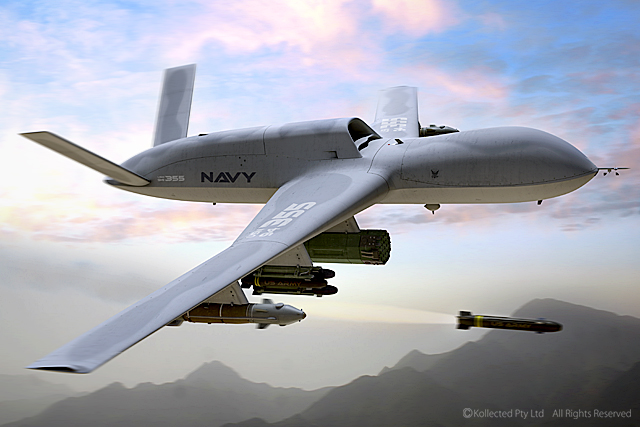PARIKRAMA
SENIOR MEMBER

- Joined
- Jan 5, 2014
- Messages
- 4,871
- Reaction score
- 185
- Country
- Location
Indian drone development, procurement , news and updates .
This will help collate all information on Rustom 1 and 2, Nishant, Guardian, Predator, Avenger, Herons, etc etc.. All indian programs and abroad purchases under this. Also will include all Aura UCAV program as well.
No Separate Thread on this topic. Pls collate and post in this thread only.
@waz @WAJsal @Oscar
Request you to sticky this thread
@Abingdonboy @anant_s @Taygibay @Picdelamirand-oil @Vergennes @randomradio @Ankit Kumar 002 @MilSpec @Koovie @Echo_419 @Dash @hellfire @ito @SR-91 @AMCA @DesiGuy1403 @ranjeet @hellfire @fsayed @SpArK @AUSTERLITZ @nair @proud_indian @Roybot @jbgt90 @Sergi @Water Car Engineer @dadeechi @kurup @Rain Man @kaykay @Joe Shearer @Tshering22 @Dandpatta @danger007 @Didact @Soumitra @SrNair @TejasMk3@jbgt90 @ranjeet @4GTejasBVR @The_Showstopper @guest11 @egodoc222 @Nilgiri @SarthakGanguly @Omega007 @GURU DUTT @HariPrasad @JanjaWeed @litefire @AMCA @Perpendicular @Spectre@litefire @AMCA @Perpendicular@Ryuzaki @CorporateAffairs @GR!FF!N @migflug @Levina@SvenSvensonov @-xXx- @Perpendicular @proud_indian @Mustang06 @Param @Local_Legend @Ali Zadi @hellfire @egodoc222 @CorporateAffairs @Major Shaitan Singh @jha @SmilingBuddha @#hydra# @danish_vij @[Bregs] @Skillrex @Hephaestus @SR-91 @Techy @litefire @R!CK @zebra7 @dev_moh @DesiGuy1403 @itachii @nik141993 @Marxist @Glorino @noksss @jbgt90 @Skull and Bones @Kraitcorp @Crixus @waz @WAJsal @Oscar @AugenBlick @Star Wars @GuardianRED @arp2041 @Aero https://defence.pk/members/bregs.148509/ @Armani @ashok321 @kahonapyarhai @others
This will help collate all information on Rustom 1 and 2, Nishant, Guardian, Predator, Avenger, Herons, etc etc.. All indian programs and abroad purchases under this. Also will include all Aura UCAV program as well.
No Separate Thread on this topic. Pls collate and post in this thread only.
@waz @WAJsal @Oscar
Request you to sticky this thread
@Abingdonboy @anant_s @Taygibay @Picdelamirand-oil @Vergennes @randomradio @Ankit Kumar 002 @MilSpec @Koovie @Echo_419 @Dash @hellfire @ito @SR-91 @AMCA @DesiGuy1403 @ranjeet @hellfire @fsayed @SpArK @AUSTERLITZ @nair @proud_indian @Roybot @jbgt90 @Sergi @Water Car Engineer @dadeechi @kurup @Rain Man @kaykay @Joe Shearer @Tshering22 @Dandpatta @danger007 @Didact @Soumitra @SrNair @TejasMk3@jbgt90 @ranjeet @4GTejasBVR @The_Showstopper @guest11 @egodoc222 @Nilgiri @SarthakGanguly @Omega007 @GURU DUTT @HariPrasad @JanjaWeed @litefire @AMCA @Perpendicular @Spectre@litefire @AMCA @Perpendicular@Ryuzaki @CorporateAffairs @GR!FF!N @migflug @Levina@SvenSvensonov @-xXx- @Perpendicular @proud_indian @Mustang06 @Param @Local_Legend @Ali Zadi @hellfire @egodoc222 @CorporateAffairs @Major Shaitan Singh @jha @SmilingBuddha @#hydra# @danish_vij @[Bregs] @Skillrex @Hephaestus @SR-91 @Techy @litefire @R!CK @zebra7 @dev_moh @DesiGuy1403 @itachii @nik141993 @Marxist @Glorino @noksss @jbgt90 @Skull and Bones @Kraitcorp @Crixus @waz @WAJsal @Oscar @AugenBlick @Star Wars @GuardianRED @arp2041 @Aero https://defence.pk/members/bregs.148509/ @Armani @ashok321 @kahonapyarhai @others











